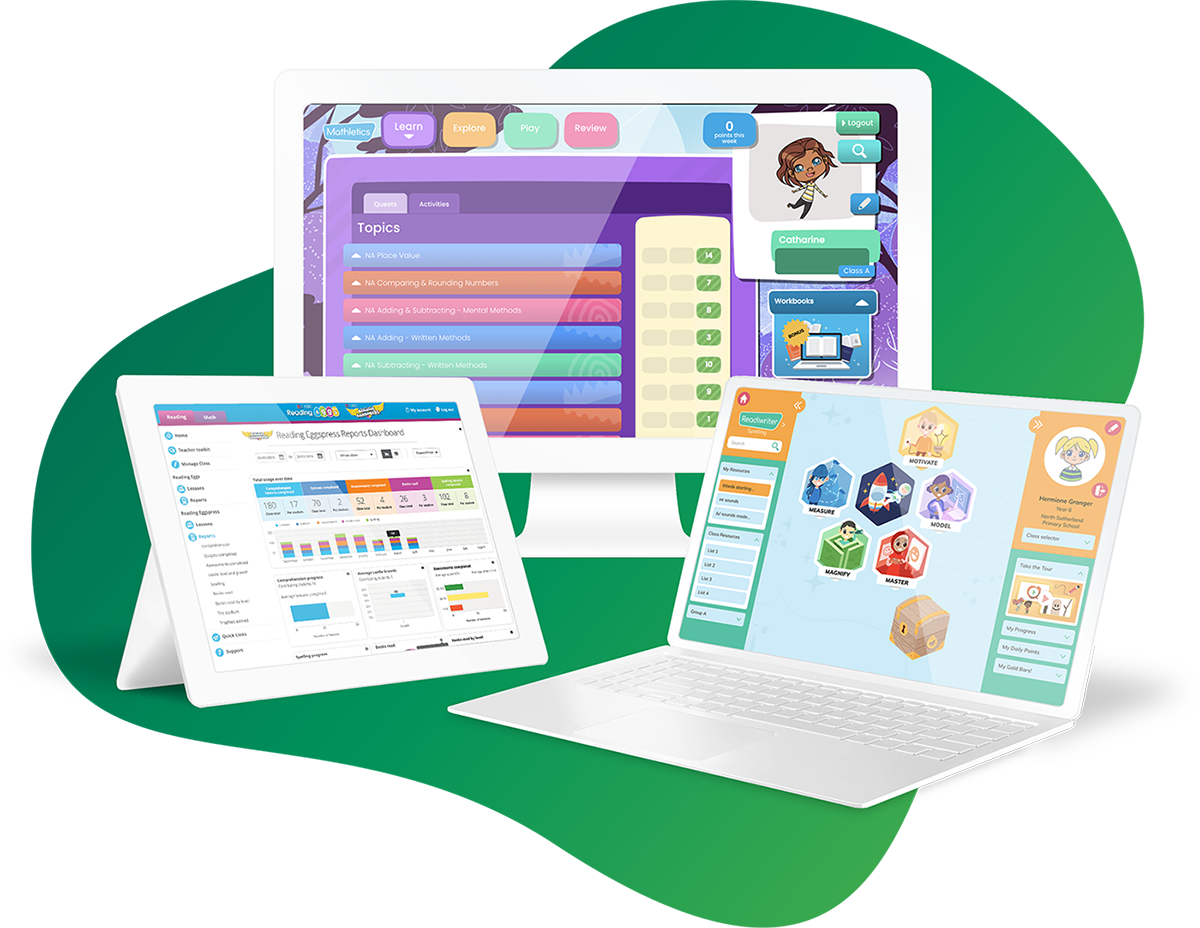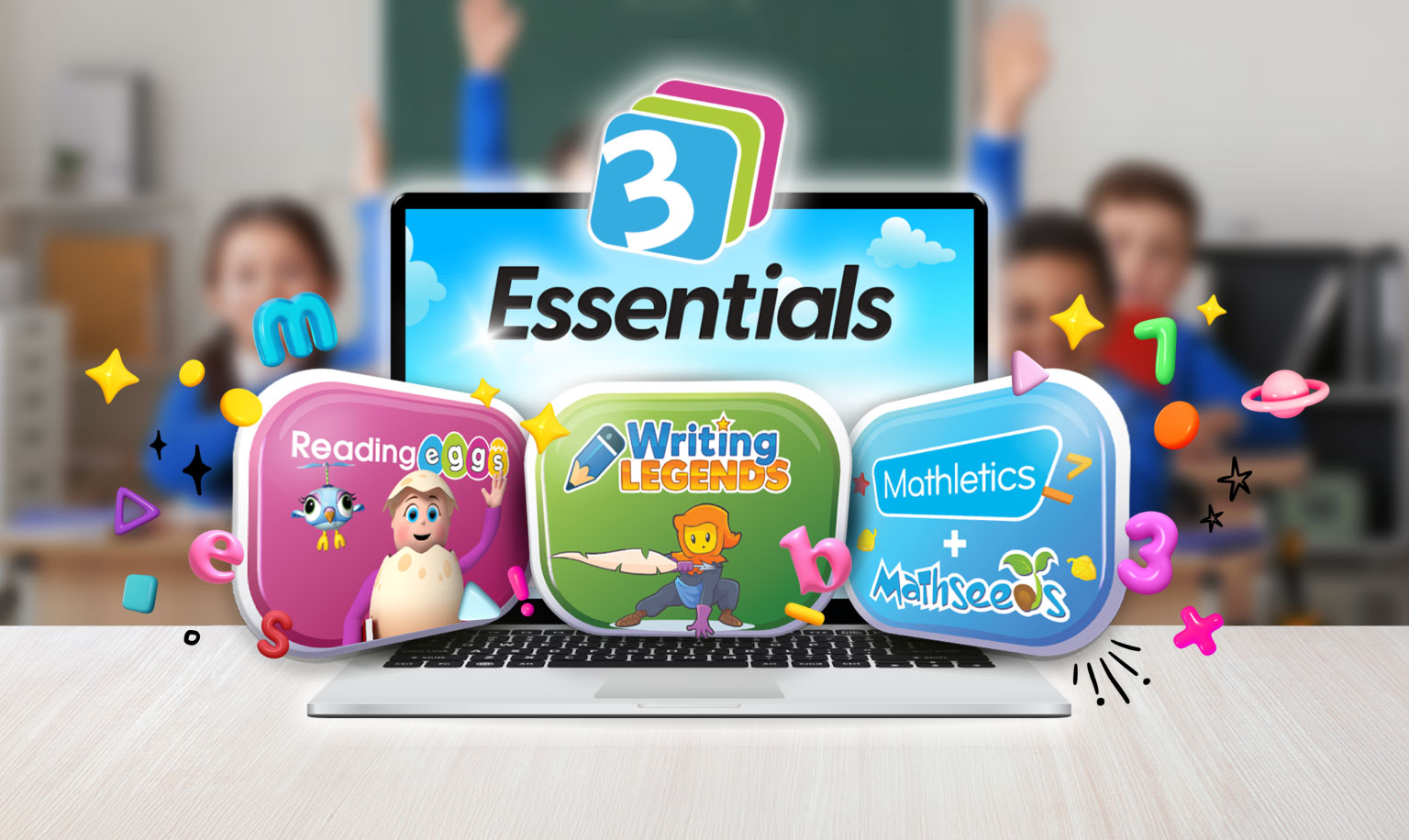
It seems like the school year is just starting, but time will fly by and testing will be here before we know it. With most students taking standardized tests online this year, it’s important to prep learners to ensure they adequately demonstrate their true abilities.
I’ve put together my top 5 tips which I gathered while teaching that I know you will be able to incorporate at home. These tips will help your children prepare all year long, and will include:
- Comfort levels- how bright do you like your screen?
- Replicate the test taking experience
- Motivation throughout the year
- Test taking strategies – teach online ones, too!
- Tech skills – no need for perfection, just practice
1. The perfect testing environment – on and off screen
Talk to your child about their comfort levels when taking a test online. It’s inevitable, learners may wait until the day of the test to tell their teacher they think their screen is too bright to read the text or maybe they won’t even be able to articulate that they are having trouble with screen brightness. Whenever your child is using technology at home, talk about screen brightness, volume of headphones, size/type of keyboard, height of chair, wrist cushions and any other factors that might impact their comfort level.
Although there may not be accommodations or modifications for some students, these are things they know they can adjust in their testing environment that will build their confidence and set them up for success. When it comes to testing day, learners will know how to adjust their equipment to ensure the perfect level of brightness and the perfect volume level. Tell their teacher if you feel they may need support, such as a small towel to go under their wrist while typing, or if a small sticker on the mouse would help identify where they need to click.
2. Replicate the test taking experience
Stretch breaks, timers, snacks, computer recordings and more. Expose your child to the type of experience they will have while taking the tests, they will know exactly what to expect. You can incorporate some of these during homework or other tasks at home. For example, while completing homework or using an online educational program such as Mathletics, set a timer for a stretch break and reinforce that they can stand up and stretch when they need to during schoolwork and online testing. Establish a time for a snack and dinner break. I know sometimes you want them to finish all their work before dinner but being exposed to long breaks may be helpful to duplicate the experience. Make sure your child knows they will be receiving breaks on long test days, this can ease anxiety.
3. Motivation over the school year
Motivating students throughout the year is something that is near and dear to me. With my students, hearing the hype 2-3 weeks before testing spiked their nerves like I’ve never seen. Teachers do feel the pressure and their students are the first to pick up on this. You can help at home by reinforcing the understanding around eating a good breakfast, getting a good night’s sleep, doing their very best and to treat a test day like every other day. When these messages come through from the school, they won’t feel new or out of the ordinary.
Discuss how your child should be the best learner they can be every day. Talk about how some students may take longer or work faster and reinforce that this is okay. Stress the importance of healthy eating, sleeping and other positive habits by incorporating these discussions at home when possible. If they know a long day of testing is coming and you’re honest about it – they may just feel better prepared. These are just my ideas, but please do what works for you and most importantly, your child.
4. Test Taking Strategies – teach online ones, too!
Test taking strategies can be taught at school and at home, but it’s important to make sure to include prep for the online version of the test. If the strategy is crossing out the wrong answers on paper, show them how to do the strike through online for process of elimination. If the strategy is highlighting, teach your child how to highlight using a mouse. If the strategy is a notepad or sticky notes, teach them how to use the notepad on the computer. Don’t worry, most of these simple tools will be embedded in the online testing environment, but learners need to have access to using them to become familiar with their functions. Mathletics includes a built-in calculator for specified activities, this would be the online equivalent to a question on a standardized test that requires a calculator. Have students practice using the mouse to select numbers and symbols on the calculator.
5. Technology skills
It’s an obvious one to say that daily exposure to technology will help students develop necessary tech skills. However, access to technology in school isn’t always easy and sometimes not every teacher knows what to focus on, what to look for and/or how to incorporate the tech skill practice during their normal lessons. The important thing is, practice doesn’t need to make perfect – it just needs to be enough. Using technology at home can help.
Keyboard Skills – everyone always marks this as number one and I’m even going to get controversial here and say that a month before the test is NOT the time to teach the “proper” way to type with online programs. However, it is important to use these programs intermittently throughout the year and to have your child type out answers frequently, so they get comfortable with typing. A lot of learners tend to shorten their answers when they are required to type them solely because they are frustrated and ‘sick of typing’- build this endurance early. Google forms, online graphic organizers and activities with short answer spaces are ideal practice. Talk to your child’s teacher about having them type and print their homework answers for additional practice.
Mouse, Trackpad and touch screen practice – Most students are using touch screens at home and a lot of schools have tablets in their classrooms – but are they using this type of technology on test day? It would be rare if your child has access to touch screen computers on test day. For most, students will need to use a mouse or track pad. Find out which one is best for your child, if both are available. You can even send in a certain mouse or track pack to plug in to a school computer if you find one they like. Practice a variety of skills with a mouse such as painting, drawing, underlining, highlighting and more. For my students, I put stickers on right and left click to help– eventually we could take the stickers off. In Mathletics, the activities incorporate a variety of question types that help with these skills such as drop-down menu choice, corresponding circle for a choice, fill in the blank, and submit buttons for answers. These are the types of questions students will see in a real testing environment and any practice helps!







